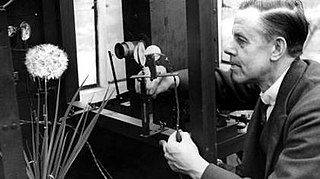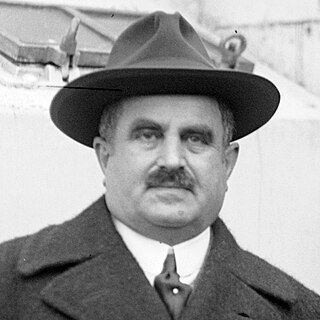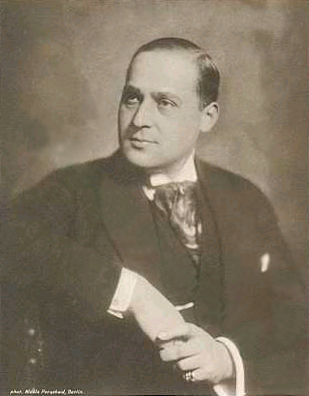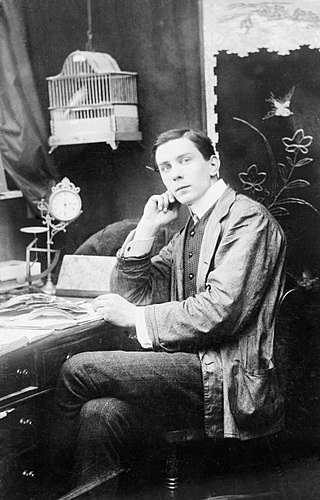
Pierce Brothers Westwood Village Memorial Park & Mortuary is a cemetery and mortuary located in the Westwood Village area of Los Angeles. It is located at 1218 Glendon Avenue in Westwood, with an entrance from Glendon Avenue.

Frank William George Lloyd was a British-born American film director, actor, scriptwriter, and producer. He was among the founders of the Academy of Motion Picture Arts and Sciences, and was its president from 1934 to 1935.

Cecil Milton Hepworth was a British film director, producer and screenwriter. He was among the founders of the British film industry and continued making films into the 1920s at his Hepworth Studios. In 1923 his company Hepworth Picture Plays went into receivership.

Richard Oswald was an Austrian film director, producer, screenwriter, and father of German-American film director Gerd Oswald.

Marshall Ambrose "Mickey" Neilan was an American actor, director, producer, and screenwriter, whose work in films began in the early silent era.

Paul Leni was a German filmmaker and a key figure in German Expressionism, making Hintertreppe (1921) and Waxworks (1924) in Germany, and The Cat and the Canary (1927), The Chinese Parrot (1927), The Man Who Laughs (1928), and The Last Warning (1928) in the United States.
Maurice Elvey was one of the most prolific film directors in British history. He directed nearly 200 films between 1913 and 1957. During the silent film era he directed as many as twenty films per year. He also produced more than fifty films – his own as well as films directed by others.

Herbert Blaché, born Herbert Reginald Gaston Blaché-Bolton was a British-born American film director, producer and screenwriter, born of a French father. He directed more than 50 films between 1912 and 1929.

Eliot Stannard was an English screenwriter and director. He was the son of civil engineer Arthur Stannard and Yorkshire-born novelist Henrietta Eliza Vaughan Palmer. Stannard wrote the screenplay for more than 80 films between 1914 and 1933, including eight films directed by Alfred Hitchcock. He also directed five films. During the early 1920s, he worked on most of the screenplays for the Ideal Film Company, one of Britain's leading silent film studios.

Gerald Ames was a British actor, film director and Olympic fencer. Ames was born in Blackheath, London in 1880 and first took up acting in 1905. He was a popular leading man in the post-First World War cinema, appearing in more than sixty films between his debut in 1914 and his retirement from the screen in 1928 in a career entirely encompassing the silent era. He was also a regular stage actor who took on many leading roles in the theatre.
Walter Alabaster West was an English film director and producer. He was a partner in the film production company Broadwest Films.
Fred Paul (1880–1967) was a Swiss-born British actor and film director. Paul was born in Lausanne in 1880 but moved to Britain at a young age. He was a prolific actor and director in the 1910s and 1920s, but his career dramatically declined with the arrival of sound films.

Frank Percy Smith was a British naturalist and early nature documentary pioneer, who explored time-lapse photography, microphotography, microcinematography, and animation.
Joan Ritz was a British actress of the silent era.
How Kitchener Was Betrayed is a 1921 British silent war film directed by Percy Nash and starring Fred Paul, Winifred Evans, and Bertram Burleigh. It was a fictional portrayal of the events leading up to the death of Herbert Kitchener on HMS Hampshire during the First World War in which the German secret service received warning of the general's activities through a German agent Elbie Böcker. The film was intended to cash in on the controversy raised by the publication of a biography of Kitchener in 1920 challenging the Admiralty's official conclusion that the ship was sunk by a mine. Only one of its six reels survives.

Bertram Burleigh was a British actor of the silent era.
Hepworth Picture Plays was a British film production company active during the silent era. Founded in 1897 by the cinema pioneer Cecil Hepworth, it was based at Walton Studios west of London.

Paul Davidson was a German film producer.

Felix Basch (1885–1944) was an American-Austrian actor, screenwriter and film director.

Arthur "Geoffrey" Herbert Malins was a British film director most famous for camera and editing work on the 1916 war film The Battle of the Somme, which combined documentary and propaganda, and reached an audience of over 20 million viewers.













